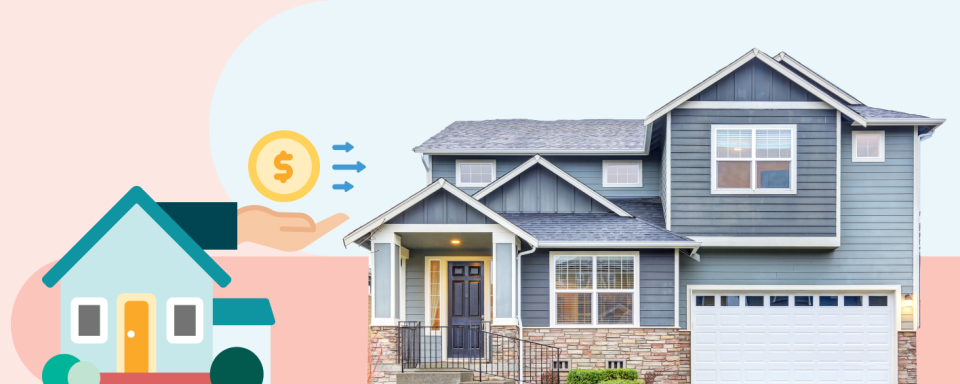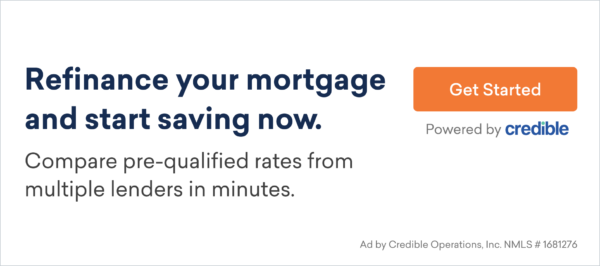Using a Cash-Out Refinance to Buy a Second Home: A Good Idea?

Credible Operations, Inc. NMLS# 1681276, “Credible.” Not available in all states. www.nmlsconsumeraccess.org.
This article first appeared on the Credible blog.
Many people want a second place to use as their dream retirement home, a vacation home, or an investment property. Utilizing a cash-out refinance can help you afford the down payment on a second home — and you might be able to lower the interest rate on your existing mortgage too.
Here’s what you need to know about using a cash-out refinance to purchase another home.
You can compare mortgage refinance rates from various lenders with Credible.
How to buy a second home with a cash-out refinance
Cash-out refinancing lets you access the equity in your home by replacing your first mortgage with a larger mortgage. You’ll pay off your new mortgage and receive the difference in cash. A popular strategy among homeowners is to use this lump sum to fund the down payment for a second home.
In general, you can cash-out up to 80% of your home equity minus the current loan balance. The one exception is a VA cash-out refinance loan. These loans let you refinance up to 100% of the value of your home, but they have stricter eligibility standards.
Example: Imagine your current home value is $400,000 and your current mortgage balance is $100,000. That leaves you with $300,000 in equity. Now, say you want to make an $80,000 down payment on a second home. You’ll take out a cash-out refinance loan worth $180,000 — $100,000 will pay off your existing mortgage, and you’ll pocket the remaining $80,000 for the down payment.
Keep in mind, the lender will also deduct closing costs from the cash-out amount. The average fees are between 2% and 5% of the loan amount similar to a traditional refinance or a new home loan.
Always shop around and compare rates with multiple lenders before you decide to go with a cash-out refinance. You can do this easily with Credible. With Credible, you’ll be able to see actual prequalified rates in only three minutes.
Qualifying for a cash-out refinance
In addition to positive home equity, lenders have minimum borrower qualifications.
You can set yourself up to qualify for a cash-out refi by meeting these basic requirements:
Minimum credit score of 620
Debt-to-income ratio (DTI) of 50% or less
History of on-time payments
Earn consistent monthly income
At least 20% equity in your home
You must also use your funds for an eligible reason like buying a second home to use as a rental property or vacation home.
Advantages of refinancing to buying a second home
There are several advantages of choosing a cash-out refinance to buy a second home, including potentially lower rates and tax advantages:
Potentially lower interest rates: Refinancing your mortgage means you can qualify for a better rate than your existing loan terms. A cash-out refi might also have lower rates than a second mortgage.
Flexible payment options: Many lenders offer 15-year and 30-year fixed APR repayment terms. Longer loan terms can mean a potentially higher interest rate but you have a smaller, more affordable, monthly payment.
Extra cash for down payment: If you need a mortgage to buy another property, the cash-out lump sum can serve as your down payment. This deposit can also help you avoid private mortgage insurance (PMI).
Potential tax advantages: Depending on the purpose of the cash-out refinance, you can claim a tax deduction. Two examples include completing capital improvements on your primary residence or maintaining a rental property. Speak with your tax preparer to discuss the tax implications of a cash-out refi.
Disadvantages of refinancing to buy a second home
Some of the drawbacks when you refinance to buy a second home include using your home as collateral and potentially paying more in closing costs:
High closing costs: Mortgage refinancing can have relatively high closing costs between 2% and 5% of the total loan amount. A home equity line of credit (HELOC) can offer similar borrowing limits and potentially lower fees. Lenders may waive the HELOC closing costs if you keep the credit line open for a certain number of years.
The primary home is collateral: Your primary home is the collateral even if you use the cash-out refinance to buy another property. If you default on the loan, the lender can foreclose on your primary residence.
Higher monthly mortgage payments: Refinancing means you can qualify for a lower interest rate but the larger loan balance can result in a higher monthly payment. A mortgage payment calculator can help you determine how much equity you can tap and what you can afford to pay monthly.
Lump-sum payment: Most homebuyers can benefit from the lump-sum payment to afford a second home. However, homeowners with significant cash reserves may prefer a line of credit to make several withdrawals and minimize interest charges.
Thinking of refinancing? In three minutes, get actual prequalified rates without impacting your credit score.
Other ways to buy a second home using home equity
Refinancing your mortgage to buy a second home may not be the best option if you don’t qualify for lower mortgage rates or you want more flexible repayment terms.
If it’s not the best for you, lenders also offer additional options to utilize your home equity.
Home equity loan
Best if: You need a lump-sum payment but don’t want to refinance your first mortgage.
A home equity loan is similar to a cash-out refinance as you get a lump-sum payment for up to 85% of your current equity. The closing costs and repayment options are similar too.
Home equity loans can be the better option in these instances:
You don’t qualify for a lower interest rate: While mortgage refinance interest rates are near historic lows, the interest rate you qualify for may not be as low as your current rate. Therefore, your total borrowing costs might be lower if you skip refinancing and only pay the higher rate on the home equity loan.
Minimize closing costs: A cash-out refinance requires you to pay closing costs on the entire loan amount. These fees can offset any savings from a lower interest rate if you have a high mortgage balance. Meanwhile, lenders may not even charge closing costs on home equity loans.
Tax implications: Having separate loans can make it easier to prepare your tax return if you can deduct your primary mortgage interest. Home equity paid interest can be tax-deductible, but the IRS states the deduction only applies when you “buy, build, or substantially improve the home” securing the loan.
Fixed monthly payments: Receiving a one-time lump-sum distribution lets you calculate your monthly payment and total loan costs.
Tip: Compare cash-out refinance and home equity loan closing costs and interest rates, and see which loan has the lowest lifetime costs.
Home equity line of credit (HELOC)
Best if: You want to make multiple withdrawals and get a potentially lower variable interest rate.
A home equity line of credit can be a better option if you don’t want to take out a big chunk of your home equity at once. Over the loan’s draw period, you can make withdrawals as needed up to your credit limit. Once the draw period is over, you’ll pay back what you borrowed.
Here are several key traits of a home equity line of credit:
Variable interest rate: Many HELOCs have a variable interest rate. These tend to be lower than the fixed interest rates for cash-out refis or home equity loans. However, variable rates — as the name suggests — can fluctuate and become higher in the future, potentially erasing any initial interest savings.
Draw period: Most credit lines have a draw period of up to 10 years. During this time, you can borrow up to your credit limit as necessary. After the draw period closes, you can no longer make any withdrawals.
Interest-only payments: You only need to make interest payments during the draw period. Once the draw period closes, you have a fixed number of years to repay the principal plus interest charges. The repayment period varies by lender but can be as long as 20 years.
Lower closing costs: HELOC closing costs can be lower than a home equity loan. Compare several lenders as some are more willing to waive fees.
A HELOC is one of the most flexible ways to use your home equity. However, you must be comfortable with a variable interest rate — or find a lender that offers a fixed-rate option.
Get the cash you need and the rate you deserve. Compare lenders and prequalify in just three minutes with Credible.
About the author: Josh Patoka is a personal finance authority and a contributor to Credible. His work has been published on Fox Business and several award-winning personal finance blogs including Well Kept Wallet, Wallet Hacks, and Frugal Rules.
The post Using a Cash-Out Refinance to Buy a Second Home: A Good Idea? appeared first on Credible.

 money
money 


